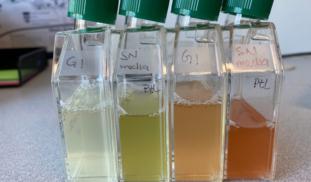Please wait...
About This Project
Marine phytoplankton activity is abundant at a global scale and play a major role in the carbon cycle. However, the availability of nutrients is limited in the ocean, thus restraining the activity of phytoplankton. Proposed ocean-based climate solutions include adding nutrients to trigger phytoplankton blooms, but previous research indicates the impact is uncertain. We will address the nutrient requirements and how the cells use these nutrients in phytoplankton.
More Lab Notes From This Project

Browse Other Projects on Experiment
Related Projects
Addressing the terrifying issue of multi-drug resistant bacterial and fungal pathogens using synthetic organic chemistry
The synthesis of compounds inspired by the molecules of nature is a proven strategy for discovering new...
Coupling of microbial carbon capture and utilization (microCCU) and direct air capture (DAC)
Reducing atmospheric CO2 is critical to mitigating climate change, and negative emission technologies (NETs...
Enhancing Carbon Sequestration By Improving Photosynthetic Efficiency
Enhancing photosynthesis can help mitigate greenhouse gases, but plants and algae use only visible light...


